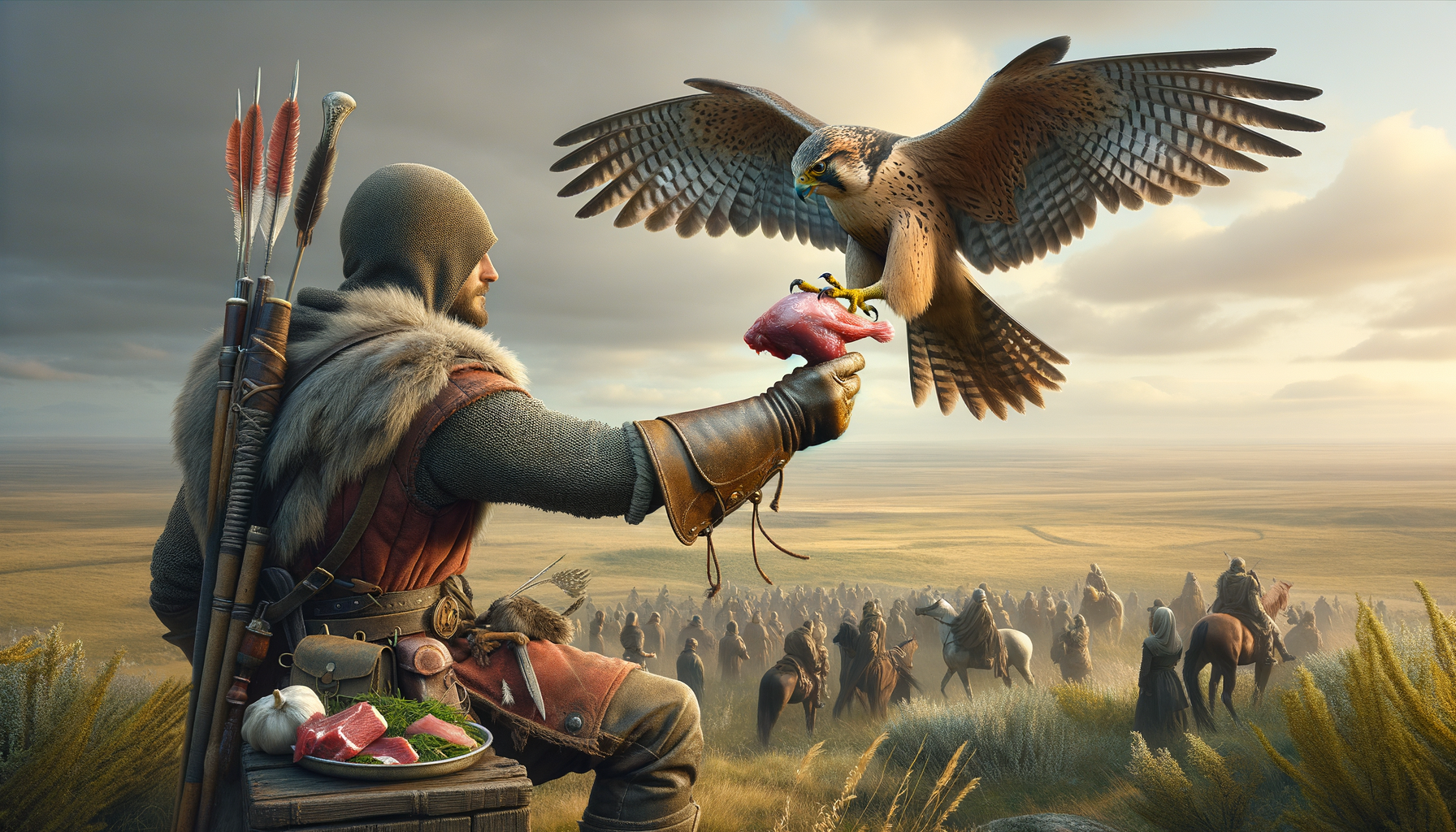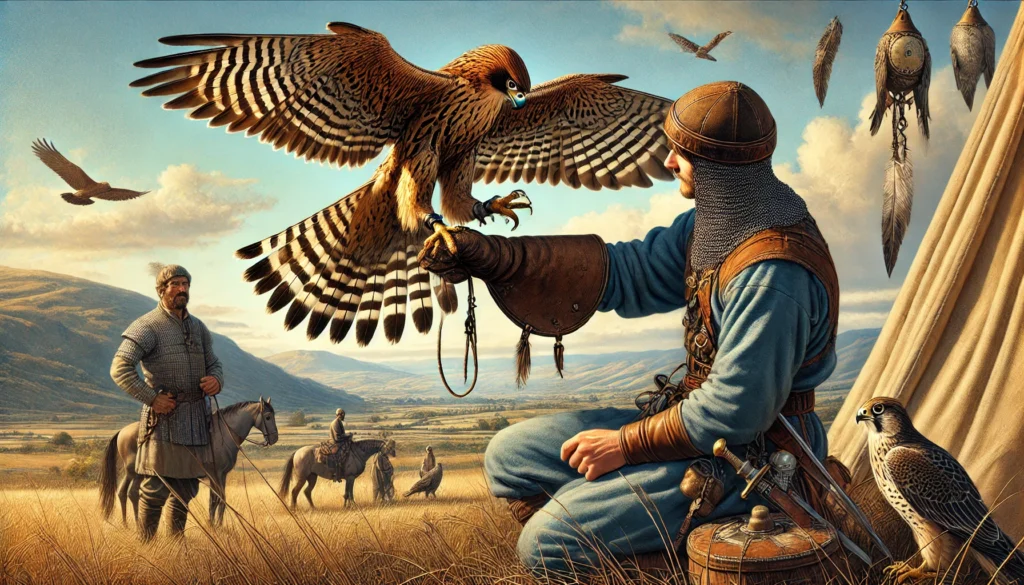Training Your Falcon: Key Insights from Learn Falconry
- Basics of Falcon Training: Start with basic commands and gradually introduce more complex tasks.
- Building Trust: Developing a strong bond with your falcon is crucial for successful training.
- Use of Rewards: Reward good behavior with treats to reinforce positive actions.
- Consistency is Key: Maintain regular training sessions for better results.
- Patience and Persistence: Training a falcon requires time and dedication; don’t rush the process.
- Understanding Falcon Behavior: Learn to read your falcon’s body language and signals.
- Safety First: Always prioritize the safety of both the trainer and the falcon during training sessions.
- Environmental Factors: Train in a controlled environment to minimize distractions and hazards.
- Equipment Essentials: Proper training equipment, like gloves and leashes, is necessary for effective training.
- Health and Nutrition: Ensure your falcon is healthy and well-nourished to perform at its best.
Mastering the Art of Training a Falcon: A Journey to True Partnership
Imagine you’re walking through the lush green hills of Ireland, where the air is crisp, and the sky seems endless. Just like an Irish shepherd tending to his sheep with a bond built on trust and understanding, training a falcon is all about developing a harmonious relationship. Here at Learn Falconry, we believe that anyone can master the incredible skill of falconry with the right guidance and a little bit of patience.
In this article, we’ll explore the fascinating world of falcon training, diving deep into the essential techniques and the vital role of trust between you and your feathered friend. By understanding the unique aspects of falconry, you’ll not only become a skilled falconer but also forge a lifelong connection with one of nature’s most majestic creatures. So, stick with us on this journey ‘ it’s going to be an exciting and enlightening ride!
All You Need to Know About Training a Falcon
Training a falcon is a fascinating journey that combines patience, dedication, and a deep connection with these magnificent birds. At Learn Falconry, we understand the importance of providing clear and detailed information about falcon training, ensuring that enthusiasts of all ages can appreciate and excel in this ancient art. In this article, we will dive into the world of falconry training, answering key questions and providing insights into the process.
What is Falconry Training?
Falconry training, also known simply as falcon training, is the process of conditioning and teaching a falcon to perform specific tasks, such as hunting or returning to the falconer. This practice dates back thousands of years and has been a revered sport and method of hunting in many cultures. To understand more about the rich history of falconry, you can explore the fascinating history of falconry.
How to Train a Falcon
When it comes to “how to train a falcon,” it’s essential to follow a structured approach. The training process typically involves several stages:
- Manning the Falcon: This initial stage involves getting the falcon accustomed to human presence. The bird must become comfortable perching on your glove and being handled.
- Hood Training: The next step is familiarizing the falcon with wearing a hood, which helps to keep the bird calm and focused. Learn more about the various types of hoods in our falconry equipment section.
- Lure Training: This involves using a lure to simulate hunting and encouraging the falcon to strike at it. It’s a crucial technique that helps the bird develop its hunting skills. You can read about different falconry techniques used in training.
- Free Flight: This advanced stage involves letting the falcon fly freely and return upon command. It requires trust and a strong bond between the falconer and the bird. For further reading on this, check out our guide on training falcons for free flight.
How Long Does It Take to Train a Falcon?
One common question is, “how long does it take to train a falcon?” The duration of falconry training varies depending on several factors, including the bird’s species, age, and temperament. Typically, basic training can take anywhere from a few weeks to several months. However, ongoing training and practice are crucial for maintaining the falcon’s skills and responsiveness.
What is the Easiest Falcon to Train?
For beginners, knowing “what is the easiest falcon to train” is crucial. Falcons like the American Kestrel and the Peregrine Falcon are known for their trainability and are often recommended for novice falconers. Their relatively small size and adaptability make them suitable for those just starting with falconry. To explore more species, visit our species of falcons page.
What is the Most Trainable Falcon?
“What’s the most trainable falcon?” you might wonder. While different species have attributes making them more or less suitable for training, the Peregrine Falcon stands out as one of the most trainable falcons due to its intelligence, agility, and ease of adaptation to various training methods.
By understanding these basics and incorporating falconry techniques, you can create a strong foundation for training your falcon. For more detailed information and advanced tips, check out our resources on advanced falconry training.
Start your journey with Learn Falconry and discover the rich traditions and modern practices of this timeless art. Whether you’re a beginner or looking to advance your skills, we provide comprehensive guides and resources to help you every step of the way. Happy training!
Training a Falcon: A Deep Dive
Falconry is a remarkable and ancient practice that involves training birds of prey, particularly falcons, for hunting and sport. Here at Learn Falconry, we provide an in-depth and hands-on approach to mastering this art. Falcon training requires patience, consistency, and an understanding of the bird’s innate behaviors. Let’s explore what it takes to train a falcon effectively.
Training Program Overview
The training process involves several stages, each focusing on building trust and skill. Below, we delve into the various components of falcon training, backed by data and examples.
Initial Training Phases
- Manning (Acclimation and Trust Building):
- Days 1-3: The falconer works to make the falcon comfortable around humans by letting it eat from the glove. By the end of this phase, the bird should be hopping onto the glove.
- Days 4-7: The falcon begins flying short distances on a light creance (a long line) to build confidence and muscle strength.
Day Training Activity Expected Outcome 1-3 Eating from glove, hopping Falcon hops onto glove, shows reduced fear 4-7 Flying on creance Falcon flies 20 feet, starts understanding commands
- Hood Training:
- Days 3-4: Introducing the falcon to the hood, a critical piece of equipment that keeps it calm when not hunting.
- Days 4-7: The bird learns to accept the hood while eating from the glove, ensuring it remains calm and stress-free.
- Advanced Manning:
- Days 1-7: Continue gaining the bird’s trust by handling it frequently and ensuring it is comfortable perching calmly.
Lure Training
Once the falcon is used to the falconer and basic commands, lure training begins. This phase includes:
- Days 8-14: The falcon is trained to follow and capture a lure, which mimics the movement of prey. Start with the bird on a creance and gradually move to free flights as the bird shows competency.
Free-Flight and Hunting Skills
After several weeks of consistent training:
- Several Weeks: The falconer aims to have the bird free-flying, demonstrating its ability to hunt actual game successfully.
The Ideal Falcon Species for Beginners
Choosing the right bird is crucial for success in falconry. Here are some recommendations for beginners:
- Harris Hawks: Known for their sociability and adaptability, making them perfect for learners.
- Red-tailed Hawks: Easy to handle and versatile in different environments.
- Kestrels: Smaller and easier to manage, though slightly more sensitive.
Time Commitment and Equipment
Training a falcon requires significant time and dedication:
- Permits and Regulations:
- Falcon training requires permits from relevant wildlife authorities. The falconer must pass a written test and have their equipment and housing inspected.
- Required Equipment:
- Essential falconry gear includes gloves, hoods, lures, and perches. All must meet specific standards to ensure the bird’s well-being.
Typical Training Timeline
Here’s a summarized timeline for training a falcon:
| Phase | Duration | Key Activities | Outcomes |
|---|---|---|---|
| Initial Training | Days 1-7 | Eating from the glove, light flights | Trust build-up, basic movement understanding |
| Hood Training | Days 3-7 | Hood acclimation | Falcon accepts hood while eating |
| Advanced Manning | Days 1-7 | Perching calmly, trust enhancement | Falcon perches quietly, bating reduced |
| Lure Training | Days 8-14 | Flying on creance, lure following | Falcon learns to capture lure |
| Free-Flight and Hunting | Several Weeks | Advanced flights, game hunting | Ready for actual hunting sessions |
Accessibility and Support
We’re committed to making your training experience as seamless as possible:
- Parking and Accessibility: Designated parking spots for fans and participants, including accessible options for individuals with disabilities.
- Medical Services: Available during training sessions to ensure safety.
- Seating and Concessions: Comfortable and convenient facilities to enhance the learning experience.
That concludes our structured overview of falcon training. Every step is essential in cultivating a strong and effective learning environment for both the falconer and the bird. Enjoy your journey in this fascinating realm with Learn Falconry!
Final Thoughts on Training a Falcon
Training a falcon involves dedication, patience, and time. Courses available span from one to three days and cost between $1,000 and $3,000. These courses focus on hands-on learning guided by skilled instructors. Practical aspects such as parking, item restrictions, and medical services are important to consider when attending training.
Specific permits and equipment are required for falconry, with fees tied to the process. Initial training and manning can take several weeks, progressing from basic glove feeding to more advanced outdoor training and hunting techniques.
Ultimately, choosing the right bird, like the highly adaptable Harris Hawk or the agile Peregrine Falcon, can significantly influence your success. By understanding the bird’s behavior and needs, you’ll make your falconry experience rewarding and impactful. Happy training!



